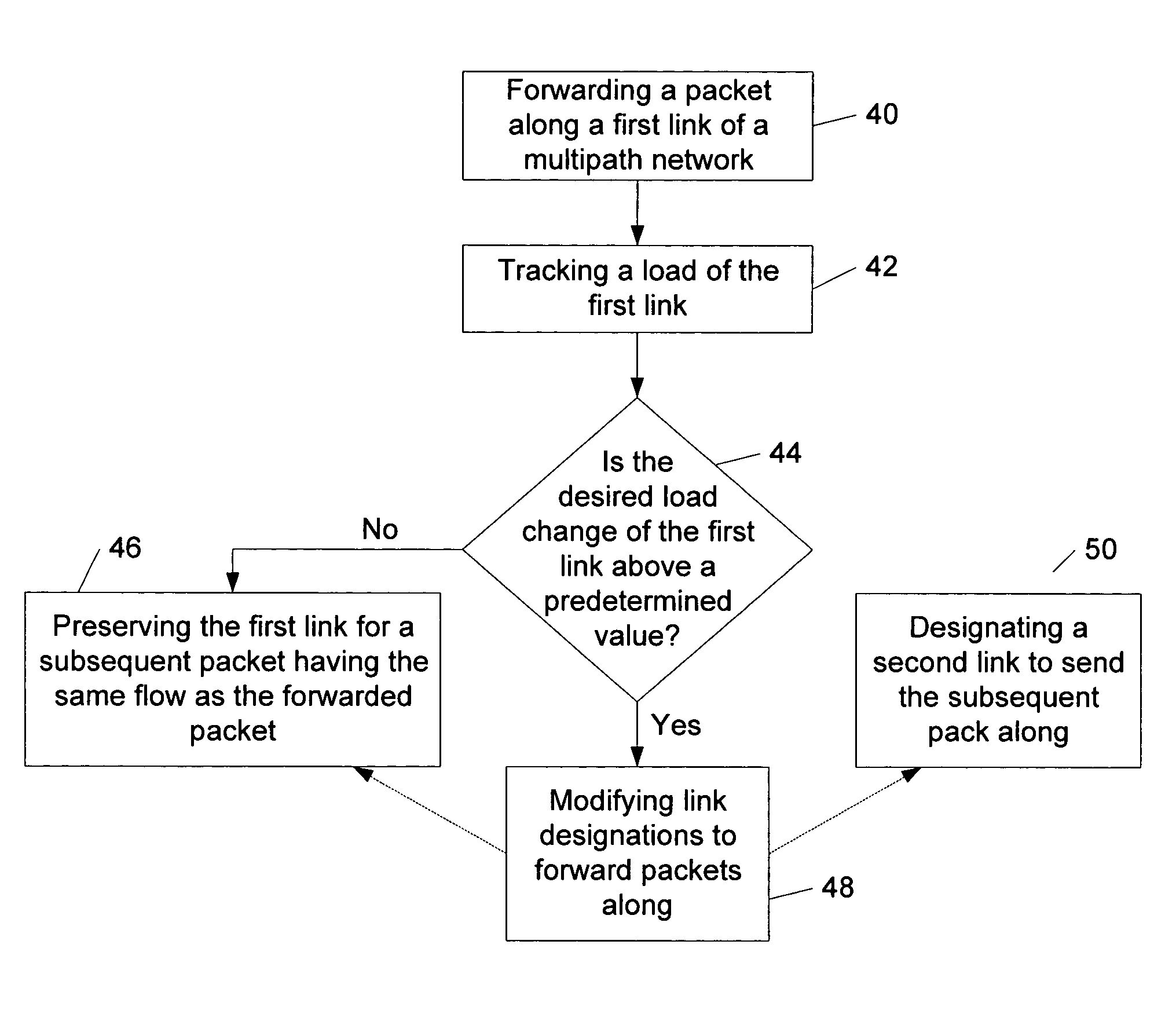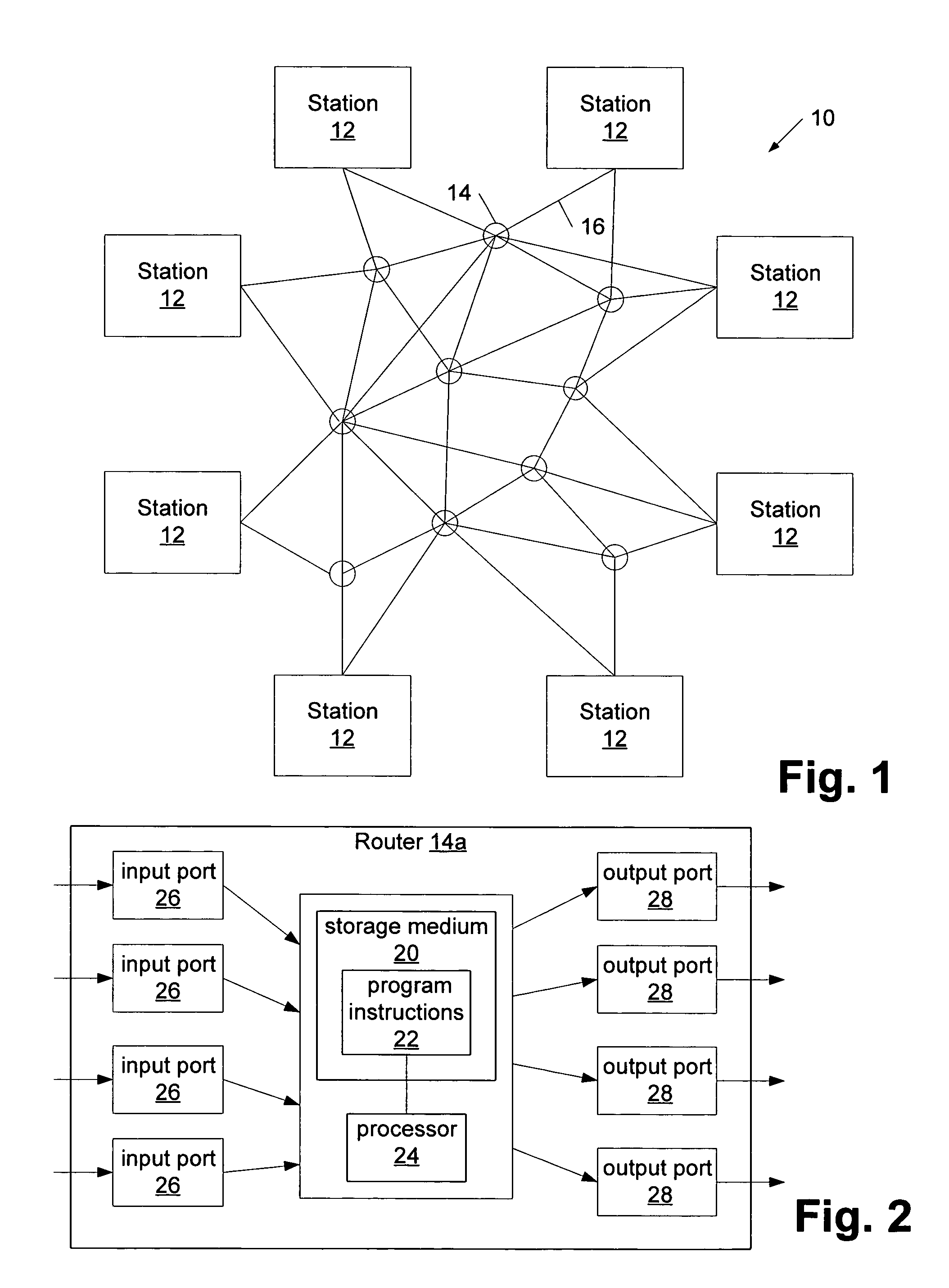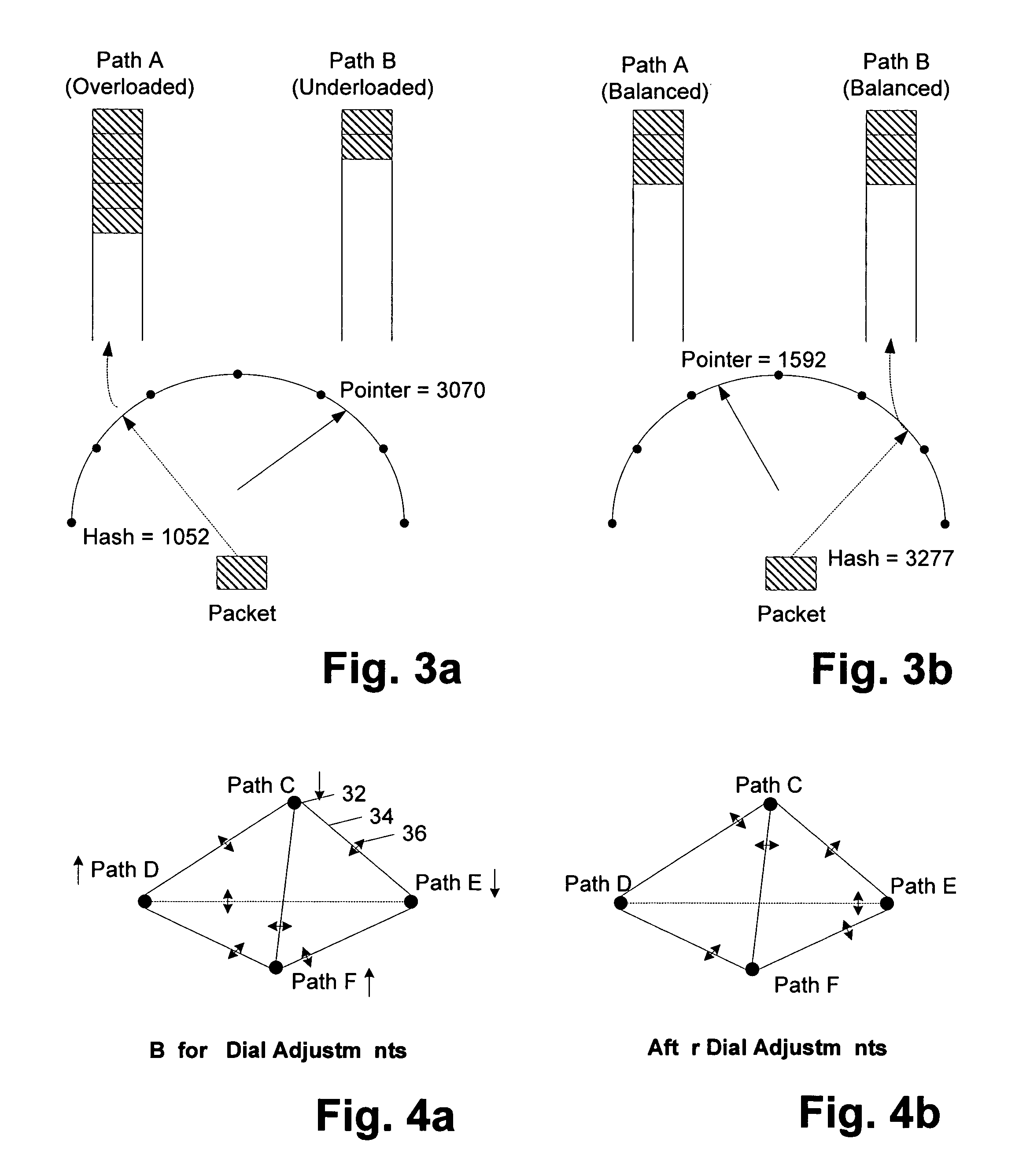Traffic flow management through a multipath network
a multi-path network and traffic flow technology, applied in data switching networks, multiprogramming arrangements, instruments, etc., can solve problems such as path oscillation, packets of the same stream to be delivered to the destination address out of order, and increase the processing time per packet within the router
- Summary
- Abstract
- Description
- Claims
- Application Information
AI Technical Summary
Benefits of technology
Problems solved by technology
Method used
Image
Examples
Embodiment Construction
[0020]The following discussion is directed to various embodiments of the invention. Although one or more of these embodiments may be preferred, the embodiments disclosed should not be interpreted, or otherwise used, as limiting the scope of the disclosure, including the claims, unless otherwise specified. In addition, one skilled in the art will understand that the following description has broad application, and the discussion of any embodiment is meant only to be exemplary of that embodiment, and not intended to intimate that the scope of the disclosure, including the claims, is limited to that embodiment.
[0021]Turning now to the drawings, exemplary embodiments of system, apparatuses and methods for partitioning traffic through a multipath network are provided. In particular, a multipath network and a router which are configured to dynamically partition traffic are illustrated respectively in FIGS. 1 and 2, while FIG. 5 outlines a method for partitioning traffic within a multipath...
PUM
 Login to View More
Login to View More Abstract
Description
Claims
Application Information
 Login to View More
Login to View More - R&D
- Intellectual Property
- Life Sciences
- Materials
- Tech Scout
- Unparalleled Data Quality
- Higher Quality Content
- 60% Fewer Hallucinations
Browse by: Latest US Patents, China's latest patents, Technical Efficacy Thesaurus, Application Domain, Technology Topic, Popular Technical Reports.
© 2025 PatSnap. All rights reserved.Legal|Privacy policy|Modern Slavery Act Transparency Statement|Sitemap|About US| Contact US: help@patsnap.com



